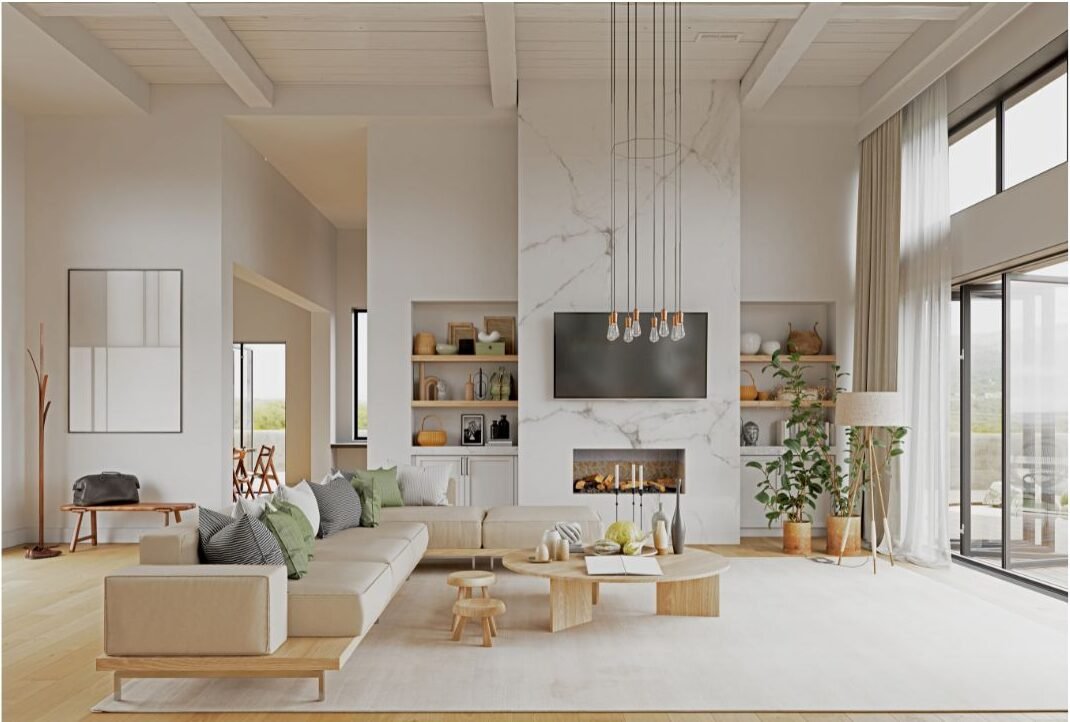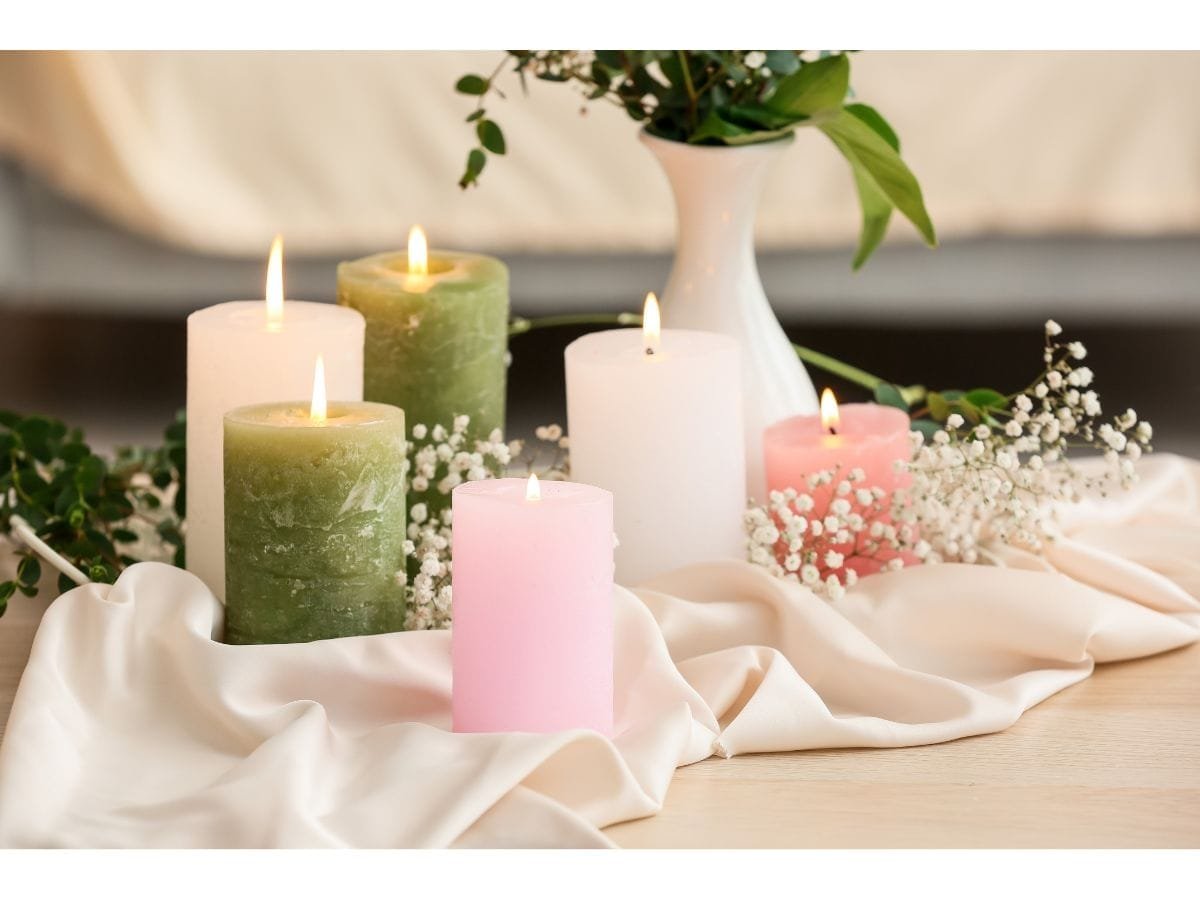Make your dining room a place of connection & joy with Feng Shui
Your dining room design is much more than a place to eat; it’s a space where you can cultivate meaningful memories with family and friends. With the right elements—color, lighting, furniture, and fabrics—you can create an atmosphere that invites warmth, conversation, and enjoyment. Feng shui dining room principles offer valuable guidance on how to enhance this space, ensuring it supports both your well-being and the connections you share with loved ones.
Center Your Dining Table for Optimal Feng Shui Energy Flow
In feng shui, the dining table is the heart of the room, so it should be placed centrally to encourage a harmonious flow of energy. Positioning it where people can comfortably sit and move around without feeling confined is the key to proper dining area feng shui.
Here are the optimal guidelines for designing the dining area:
Space Behind Chairs: Allow at least 36 inches of clearance behind dining chairs for easy movement.
Table Height: Standard dining tables should be between 28 to 30 inches high, with chairs having a seat height of about 18 inches.
Chair Height: Aim for a chair seat height that is 10 to 12 inches lower than the table height for comfortable legroom.
Table Width: A dining table should be at least 36 inches wide for place settings and serving dishes, with 48 inches being ideal for larger gatherings.
Table Length: Allow 24 to 30 inches of space per person along the table’s length for comfort.
Overall Layout: Maintain at least 24 inches between the table edge and any walls or furniture for accessibility.
Lighting: Position lighting 30 to 36 inches above the tabletop for optimal visibility.
A sturdy table is essential; a wobbly or unstable table can disrupt energy flow, causing unease and affecting the digestion process. Our bodies are incredibly sensitive to subtle energies. When we dine at a steady, well-positioned table, our bodies subconsciously perceive a sense of stability and security. This positive energy can enhance our appetite, improve digestion, and elevate our overall dining experience. Conversely, a chaotic or disorganized dining area can lead to anxiety, which negatively impacts our experience.
Following dining room feng shui rules, round or oval tables are often favored, as they promote equality and unity by preventing sharp edges, which can disrupt the flow of positive energy. However, rectangular tables can also work well, especially in larger spaces, as long as they are balanced with rounded elements like soft linens or curved décor. Ensure your table is solid and steady—this adds to the stability and grounding energy within the room.
Warm Colors in Feng Shui: To Stimulate Appetite and Conversation
When designing a feng shui in dining room space, a thoughtfully curated color palette is essential for creating an inviting and sophisticated atmosphere. Using a combination of warm neutrals and rich accent colors to provide a sense of elegance and comfort. Soft beiges, creamy whites, and muted grays can serve as a serene backdrop. This allows flexibility in decorating and the incorporation of various textures and materials.
Rich jewel tones, such as deep greens, blues, and burgundies, can elevate a space, adding depth and luxury. These colors can be introduced through upholstery, artwork, or decorative accents, creating focal points that draw the eye and encourage conversation.
From a feng shui perspective, the color palette further influences the energy flow within the dining room. Warm, inviting shades such as soft yellows promote lively interactions, enhancing the overall dining experience. Red, known for stimulating appetite and excitement, can be incorporated in moderation to avoid overwhelming the senses. It’s ideal to use red through accents like table settings or artwork rather than dominant wall colors.
A sense of stability and grounding is also conveyed by earthy tones in accordance with feng shui principles. In addition to creating a balanced environment that facilitates relaxation and nourishment, these colors can enhance your connection to nature. By merging sophisticated design aesthetics with feng shui insights, a dining room can be both visually stunning and energetically harmonious.
Amplify Abundance with Mirrors in Feng Shui Dining Room Design
Mirrors are a powerful tool in feng shui and can work wonders in a dining room. A large mirror placed strategically on one of the walls can reflect the dining table, symbolizing abundance and prosperity. It also doubles the sense of space, making the room feel larger and more open, which is especially useful in smaller dining areas. When paired with candlelight, the reflective surface amplifies the soft, flickering glow, creating an intimate and elegant atmosphere.
Be mindful not to place mirrors directly across from the door or where they may reflect clutter, as this could bring unsettling energy into the room. Instead, use them to reflect beautiful, harmonious elements, such as a centerpiece of flowers or a well-set table.
Layered Lighting for the Perfect Feng Shui Atmosphere
Lighting is one of the most critical factors in establishing the right ambiance in your dining room. Feng shui lighting dining room principles recommend layering your lighting to create both warmth and flexibility. Dimmer switches are a great way to adjust brightness to suit the occasion. For intimate dinners, opt for soft, warm lighting that fosters a relaxed and cozy environment. On the other hand, brighter lighting is ideal for family gatherings or festive occasions, infusing the space with energy and excitement.
Incorporate natural light whenever possible, as it brings in vibrant, life-affirming energy. If your dining room lacks windows or natural light, compensate with soft overhead lighting or wall sconces. Candlelight can also create a soothing and intimate atmosphere, especially during evening meals.
Luxurious Fabrics: Elevating Comfort and Style in Your Dining Room
Fabrics are often overlooked in dining room design, but they play a significant role in setting the tone. Drapes, tablecloths, and seat cushions made from luxurious materials like silk, velvet, or linen can elevate the space and make it feel more refined. Opt for rich, elegant hues like deep blues, warm golds, or soft blush tones to add warmth and a sense of luxury. These fabrics not only contribute to the overall aesthetic but also enhance the experience of dining by encouraging relaxation and conversation.
Consider changing your fabrics seasonally, swapping lighter materials in the summer for heavier, more opulent textures in the colder months. This keeps your dining room feeling fresh and adaptable, while also aligning with feng shui’s principle of staying in tune with nature’s cycles.
Create a Versatile Dining Space for All Occasions
Your dining table feng shui should reflect versatility, creating a place that welcomes you whether you’re enjoying a solo meal, an intimate dinner, or hosting a large gathering. Feng shui emphasizes balance, so aim for a space that feels functional and adaptable. Keep the energy flowing by adjusting the décor to match the season or occasion, whether it’s a festive holiday, casual brunch, or romantic evening.
Incorporate a mix of formal and casual elements, such as fine china for special events and simpler, everyday tableware that still feels thoughtfully curated. Beautiful table linens, elegant centerpieces, and fresh flowers or fruits on the table can transform even the simplest meal into something special.
Align Your Dining Room with Seasonal Changes for Feng Shui Harmony
One of the beauties of feng shui dining is its respect for the changing seasons. Reflect this natural flow by updating your dining room décor throughout the year. In the spring and summer, fresh flowers, lighter fabrics, and brighter colors can evoke a sense of renewal and vitality. For fall and winter, consider rich, deep tones and cozier textiles that create warmth and invite guests to linger.
Your dining room can be a canvas that celebrates the ebb and flow of life, adapting to your mood, the occasion, and the season. The simple act of adding seasonal centerpieces or swapping out seat cushions can keep the energy fresh and engaging.
Maintain a Clutter-Free Dining Room for Positive Feng Shui Energy
To keep the energy in your dining room positive, feng shui recommends maintaining a clutter-free environment. Clutter not only restricts the flow of energy but can also create feelings of stress and chaos. Ensure that your dining table and surrounding areas are clear of unnecessary items, leaving space for good energy to circulate freely.
Incorporate thoughtful storage solutions like a sideboard or buffet table to keep dishware, napkins, and other dining essentials organized yet easily accessible. A well-organized dining room contributes to the overall sense of harmony, allowing you and your guests to fully enjoy each meal without distractions.
In summary, your dining room is a place where comfort, style, and functionality converge. By integrating feng shui principles focusing on balance, energy flow, and thoughtful design, you can transform this space into an area where every meal feels special. Whether hosting a lively dinner party or enjoying a quiet meal, your dining room will radiate warmth, harmony, and connection.
Point of Alignment
By infusing feng shui principles into your dining room, a sacred space is created. A well-designed feng shui dining room can amplify the joy of shared meals, fostering deeper connections and nourishing the soul. A round or oval table, symbolizing unity and harmony, becomes the heart of the space. Warm, inviting colors and soft, natural light create an ambiance that encourages relaxation and conversation. By strategically placing your dining table away from disruptive elements like doors or windows, you ensure a peaceful and focused dining experience.
As you gather around the table, surrounded by positive energy, you’ll notice a shift in your mood. Food tastes better, conversation flows easier, and the bonds between family and friends deepen. A feng shui-inspired dining room is more than just a place to eat; it’s a place to nourish your mind, body, and spirit.





